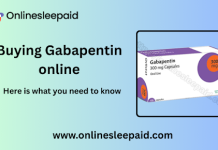Burping refers to the act of releasing gas from the stomach through the mouth. It typically occurs due to the ingestion of specific food and drinks like carbonated beverages, milk, and beer. While burping can be bothersome for some individuals, others may find it relieving. Regardless of personal preference, it is essential to grasp the techniques for inducing burps to prevent any potential awkwardness or unease.
Drinking Carbonated Drinks
One method to induce burping is by consuming carbonated beverages. These beverages contain dissolved carbon dioxide gas, which gives them their fizzy and bubbly nature. When you drink carbonated beverages, the carbon dioxide gas is released in your stomach, leading to burping. According to the National Institutes of Health (NIH), carbonated beverages can be helpful in reducing bloating and gas due to the gas release.
Various examples of carbonated beverages include soda, sparkling water, tonic water, and energy drinks. However, it’s important to be aware that these beverages can also contribute to weight gain, cavities, and dehydration. It is therefore advisable to consume them in moderation.
Eating Baking Soda or Taking Antacid
Another technique to induce burping is by ingesting baking soda or taking an antacid. Baking soda, a commonly used ingredient in baking, has the ability to generate gas when mixed with acidic liquids like vinegar or lemon juice. A study published in Clinical Gastroenterology and Hepatology highlights the effectiveness of baking soda in treating heartburn and reducing bloating and gas.
Antacids are also recognized for their ability to alleviate bloating and gas. These medications are readily available without a prescription and can be taken orally or applied as a topical cream. They function by neutralising stomach acid, providing relief from symptoms such as heartburn and indigestion. When consumed in the appropriate dosage, antacids can facilitate burping.
Drinking Water Rapidly and Swallowing Air Bubbles
Another approach to induce burping is by rapidly drinking water and intentionally swallowing air bubbles. This method involves introducing air into the stomach, which subsequently prompts the need to release it through a burp. According to a study published in the International Journal of Gastroenterology and Hepatology, this technique has been found effective in alleviating symptoms of dyspepsia, including bloating and gas.
To utilise this technique, it is crucial to drink the water swiftly while intentionally swallowing the air bubbles. This ensures that the air enters the stomach and not the lungs. It is also important to take small sips of water, as consuming large quantities at once can lead to choking.
Performing the Valsalva Maneuver
The Valsalva manoeuvre is another technique that can be used to induce burping. This maneuver involves closing the mouth and nose and attempting to exhale forcefully against a closed airway. By doing so, the pressure in the chest increases, aiding in the expulsion of air from the stomach. A study published in the journal Chest has demonstrated the effectiveness of the Valsalva maneuver in alleviating symptoms associated with gastroesophageal reflux disease, such as bloating and gas.
When performing the Valsalva maneuver, it is crucial to hold your breath for a few seconds before releasing it. This action helps to enhance the pressure in the chest and facilitates easier expulsion of air. Additionally, it is important to exercise caution and apply gentle pressure during the maneuver to avoid dizziness or lightheadedness.
Eating Gas Cause Foods
Consuming foods that are known to cause gas is another method to encourage burping. Foods such as beans, cabbage, broccoli, onions, and dairy products fall into this category. When these foods are ingested, they can lead to the accumulation of gas in the stomach, which can then be released as a burp. According to a study published in the American Journal of Clinical Nutrition, these specific foods have been found to aid in reducing bloating and gas.
It is important to be mindful of portion sizes when selecting these foods to promote burping. Consuming large portions can result in excessive gas production, causing discomfort and potential embarrassment. Furthermore, it’s crucial to keep in mind that individuals may have varying responses to different foods, so experimentation is recommended to determine which specific foods work best for each person.
Conclusion
Managing burping can help mitigate discomfort and potential embarrassment. This article discussed a range of techniques and suggestions for inducing burps, including consuming carbonated beverages, using baking soda or antacids, drinking water rapidly and swallowing air bubbles, employing the Valsalva manoeuvre, consuming gas-producing foods, and combining breath-holding with swallowing. While these methods can be effective, it is essential to exercise caution and experiment to find the most suitable approach for individual needs.
Further research is necessary to ascertain the efficacy of these techniques across diverse populations. Additionally, additional research should explore any potential risks associated with these methods and their potential interactions with other medications.
FAQ
Q1: What are some common causes of excessive burping?
Ans: Carbonated drinks, overeating, and swallowing air are common causes.
Q2: Can burping be a symptom of an underlying medical condition?
Ans: Yes, conditions like GERD and gastritis can cause excessive burping.
Q3: How can I prevent burping after meals?
Ans: Eat slowly, avoid carbonated drinks, and chew food thoroughly.
Q4: Are there any natural remedies for reducing burping?
Ans: Ginger, peppermint, and chamomile tea can help alleviate burping.
Q5: When should I seek medical attention for excessive burping?
Ans: If burping is accompanied by severe pain, nausea, or other concerning symptoms.








